Kitten Siblings Reunited: After rescuing an abandoned female kitten from the street, a hearty hooman
There's nothing that warms our heart more other than successful and wholesome adoption stories. Yes, even more than the scorching summer sun outside that melts… everything else. But our hearts are definitely a puddle of liquid as we speak, since we learned about these kitten siblings being adopted into this loving home.
First of all, this heary hooman who shared this adoption story started by saying they've found a teeny tiny kitten out in the streets, alone. and as we've mentioned - it's summer now. The poor baby must've been so hot. It makes us remember another story we've covered about a kitten rescured amidst a heatwave - just imagine what could happen if this kitten wasn't found on time. Actually, don't imagine it, because that story has a happy ending, and so does this one.
This cute kitten was so smol, and this kind person gave her a furever home… but this kitten wasn't alone. We already know the Cat Distribution System works its meowgic in mysterious ways, and it did it this time as well. One of the commenters said: 'Yep, looks like your delivery has been completed! Sorry the backorder took so long, had a system glitch.' So how it was completed? Another kitten! And not just any kitten - the adopted smol one's sibling. He was waiting in the same place, and… just look at the pictures below. No DNA test needed.
Your inbox deserves hissterical cat content. We deliver. Weekly. Subscribe here.
'I fear she might try to steal him': 19-year-old son saves stray kitten with no microchip or mother,
If someone tried to take away a cat that we had raised for over a year, we would be purrfectly peeved, to say the least.

Imagine that the CDS blesses you with a 2-week-old kitten that you raise by hand. You wake up to feed it bottles of milk, you wrap it in blankets like the purrfect little purrito to keep it warm. You take it to the vet, give them their vaccines, and get them microchipped. And then, a year later, over some random small talk, your neighbor comes up and tries to claim the cat as hers. Um, ex-squeeze you?
The cat turns out to be from her cat's litter, who unfortunately passed over the rainbow bridge, but she has proof. Your kitten has the same white triangle patch as her cat and the other kittens in the litter. But you raised this sweet little fluffball, and this Karen demands you give it back to her. No thank you, mam. The full story is just below!
Fluff. Chaos. Drama! Our weekly cat newsletter has it all - subscribe here.
'I finally snapped': 20-year-old mom who practices "gentle parenting" with her 4-year-old lets the k
Freedom. That's something that we believe in. The freedom to express yourself, the freedom to do what you want to do. We believe in all of that… up until it comes to our cats. Then, there are rules. Our houses, our cats, our rules. And that should be okay. There are certain things that cats can't eat, and there are plants that are poisonous to cats that you shouldn't bring home in bouquets, and, as should be obvious, there are certain things that you are not allowed to do to cats. Like pull their tails.
And so we are fine with gentle parenting. Generally. We're fine with that freedom - for the parents and their kids, that is their choice. Up until it comes to our cats. You can gentle-parent all you want, but pulling on our cat's tails repeatedly is not one of the freedoms that you are allowed to have. Not in our homes, not with our cats.
Fluff. Chaos. Drama! Our weekly cat newsletter has it all - subscribe here.
Cat owner who asked their neighbor to cat-sit for "a couple days" suddenly expects the neighbor to c
Despite being such small, fluffy and cute creatures, for some reason, cats seem to cause a whole lot of problems with their neighbors, and we don't really know why. Well, actually, we do know. It's because the neighbors are bad. We swear, people can do insane things sometimes. We have seen neighbors stealing cats, we have seen neighbors holding lost cats for ransom and demanding money to give them back, and we have even seen a person ask their neighbor to keep their cat out of their own yard because it is distracting their dog.
And today, what started as an entirely wholesome interaction between two neighbors turned into… what we have come to expect at this point. Because why wouldn't you con your neighbor into cat sitting your cat two times a day for two weeks without payment when the agreed-upon time was a a few days with payment? Why not?
Fluff. Chaos. Drama! Our weekly cat newsletter has it all - subscribe here.
The Future's So Brite...
With graduation season over, you might be tempted to revel in the heady hopes of a brighter tomorrow, what with all these freshly educated, newly degreed youngins descending upon our workforce and all.
I'm here to fix all that.
This cake was supposed to say - I kid you not - "It's a girl."

That apostrophe placement will be haunting my dreams tonight.
Of course, it's also possible to get the spelling and punctuation perfect, while still completely missing the point:
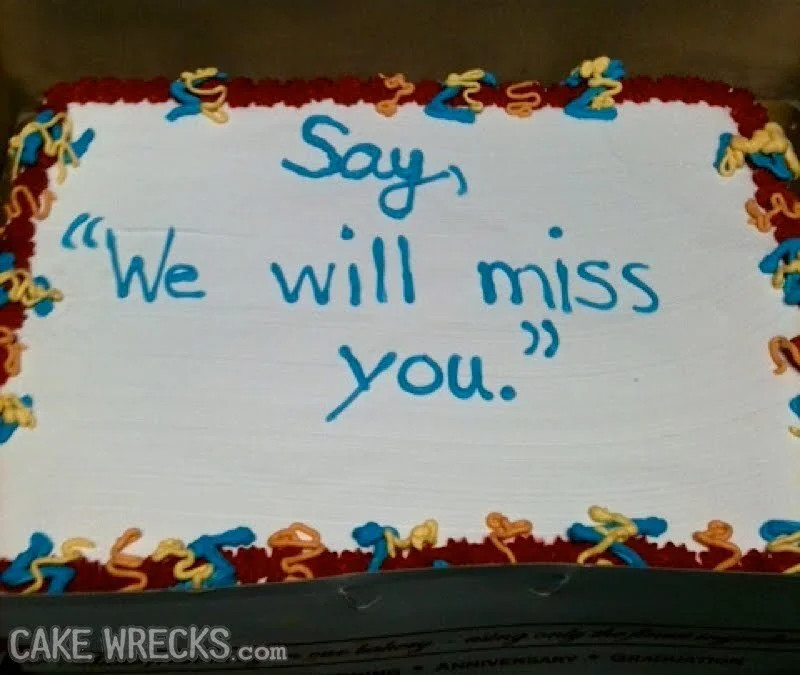
Granted, this could be a "he said, she said" issue.
Hey, remember when preschoolers were taught to put the square blocks in the square holes, and the round blocks in the round holes?
Do they not do that anymore?

For some reason I'm getting the feeling this is supposed to be a base"ball." Odd.
And remember that toy with the pull string that told you what the dog says?
Do they not have those anymore, either?
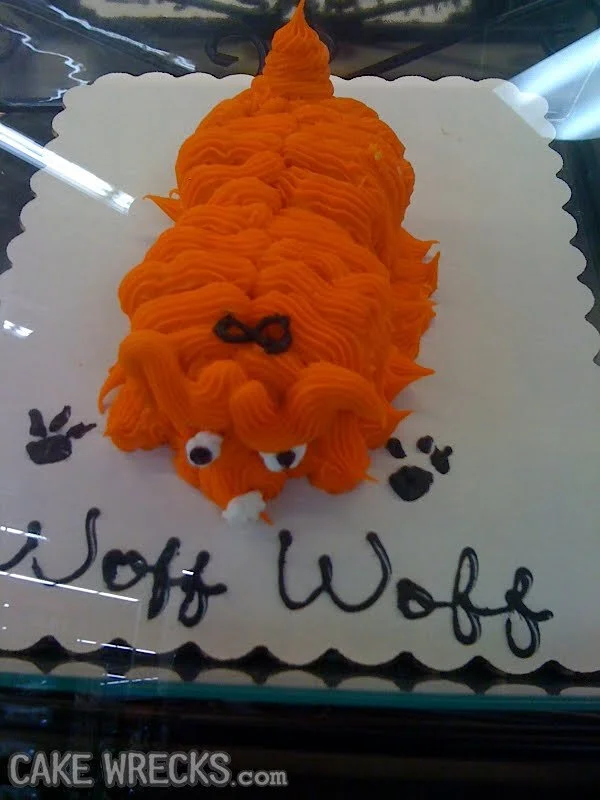
Wait. Is that a cat?
Ok, now I'm really confused.
Still, I guess we can take comfort in knowing that these wreckerators won't always be wreckerators:
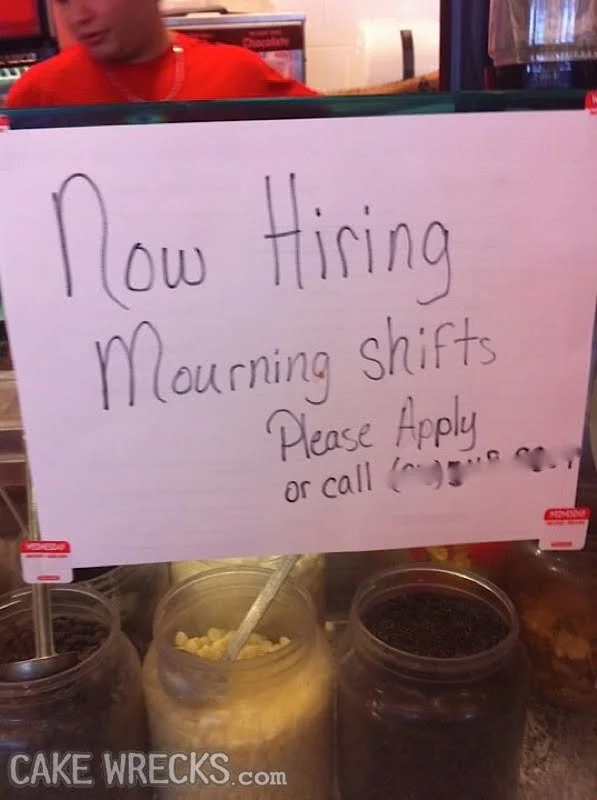
Eventually they'll get promoted to management.
Thanks to Becky A., Jane R., Stacey S., Jennifer V., & Alissa P., who want to ask that employee in the background, "Hey, why the long face?"
******
And from my other blog, Epbot:

2 One day events tomorrow
Ads for pools or showing pools
AND
Ads for/showing pool tables, yes movies with pool tables are fine!
The Bus, the Myth, the Legend: Ivan the Terra Bus
The iconic Antarctic airport shuttle is retiring from McMurdo Station after 30 years of service. What will he do next?
Listen and subscribe on Apple Podcasts, Spotify, and all major podcast apps.
Dylan Thuras: Hi, Allegra. Nice to see you.
Allegra Rosenberg: Hi, Dylan.
Dylan: How are you doing?
Allegra: I’m doing great.
Dylan: Thanks for coming on the show today. As I’ve gotten to know you over the last three months, I have come to know something about you, which is that you are very, very, very interested in Arctic—and I think particularly Antarctic history. You really like Antarctica.
Allegra: I really like Antarctica.
Dylan: Yeah, this is a thing that I know to be true about you. And so this came about because there is a kind of, there’s kind of like a celebrity in Antarctica. A very famous resident. Everyone who has gone to Antarctica in the last number of decades knows this character, even if they haven’t met them directly. It’s kind of flashy. It’s like pretty—stands out in a crowd. He also really stands out on the Antarctic landscape. So who is this character we’re talking about?
Allegra: We are talking about none other than Ivan the Terra Bus. One of the most famous and long-term residents of that region. And Ivan is, as the name describes, a big bus that you can ride in when you arrive at McMurdo Station.
Dylan: Yes, today we give our tribute to Ivan the Terra Bus. I’m Dylan Thuras and this is Atlas Obscura, a celebration of the world’s strange, incredible, and wondrous places. And today we are taking a journey to the end of the Earth. We’re taking a ride in a big red bus named Ivan across the icy, icy landscape. And we’re going to learn why after more than 30 years as this iconic fixture of this polar research station, Ivan is finally bidding farewell to the southern continent. It’s a story of heroic valor and maybe tragedy.
This is an edited transcript of the Atlas Obscura Podcast: a celebration of the world’s strange, incredible, and wondrous places. Find the show on Apple Podcasts, Spotify, and all major podcast apps.

Dylan: Allegra is Atlas Obscura’s community editor. As you heard, she is also an Antarctica super fan. Maybe let’s start with that. How did you become an Antarctic stan, maniac, lover of all things Antarctica?
Allegra: Well, it’s not because I went there. A lot of people sort of assume that to be obsessed with a place like Antarctica, it’s because you went there and fell in love. I actually haven’t been there yet. All this started for me, you know, when else do obsessions start? In the middle of lockdown, bored out of my mind. So five years ago, I didn’t have a job, couldn’t go outside. I didn’t have anything to do. So I just watched a lot of TV. And one of the shows that I watched is a show about Arctic exploration called The Terror. Once I’d watched the show, made friends online who liked it, was part of this community, I was like, well, there’s only 10 episodes, but I want to keep watching it. But I’ve watched all the episodes like five times. So what do I do next? And with something that’s based on true history, the answer is you got to start reading books. So I read every book I could find about the Arctic. And then once I ran out of those, I went south to the Antarctic. And I think I figured out that, okay, actually, this is where I’m meant to be. So it’s kind of a long journey.
Dylan: Okay, and then so as you start to research the Antarctic, you meet and fall in love with Ivan. First things first, how did Ivan get his name?
Allegra: So actually, yeah, the vehicle model was already called the Terra Bus. It’s made by this Canadian manufacturer called Foremost. Got this name back in 1981. What’s really funny is that I didn’t know that before I started researching this article. And I assumed that Ivan the Terra Bus was a double pun. Like, Ivan the Terrible meets the two mountains that on Ross Island rise above the station, Erebus and Terror.
Dylan: Oh, oh, you thought it was like a portmanteau of the two mountains. Oh, that’s good.
Allegra: Yeah. Terra Bus. Terror and Erebus.
Dylan: I really like that.
Allegra: Yeah. And it turns out that’s a complete coincidence. Which is just so—it was already called the Terra Bus.
Dylan: It was like an Earth bus. Yeah, whatever.
Allegra: Yeah, yeah, yeah, yeah. When I was researching this story, I learned that that’s a coincidence. And that when the bus arrived on the station in, I think, 1994, they just had a naming contest. And Ivan the Terra Bus was the winning name.
Dylan: That’s a great—I mean, I don’t know how you could do better than that. Okay, so Ivan gets to Antarctica in ’94. So maybe this is no longer the sleekest or most cutting edge design. Maybe you could, for people who are unfamiliar with Ivan—I mean, I can’t imagine there’s that many out there—but for people who are not familiar, what does Ivan look like?
Allegra: He’s really big. I mean, this is what stands out to people. He is massive. His wheels have six foot diameters. And you need a ladder to get up into the interior of the bus. It’s about 46 feet long, 12 and a half feet wide. It actually has a turning radius of about 160 feet, which is the equivalent of the width of a football field.
Dylan: It’s a pretty bad turning radius.
Allegra: Yeah. Ivan came to the station for one reason, right? It’s to get people to and from the airfield out on the ice where the planes land and take off. So he didn’t really need to do much turning. He just had to go in one direction and then go back in the other direction and fetch people back and forth.
Dylan: How fast is this bad boy going? What are we talking about in terms of the blazing speed of Ivan?
Allegra: He probably went, according to the people that I talked to about their experiences riding Ivan, probably maximum 20 miles per hour.
Dylan: Okay. Okay. That’s not bad. And besides just being enormous and like very, you know, having these gigantic tires, like monster truck tires. Picture monster truck tires, this kind of lifted bus. It’s also, you know, it’s kind of this square blocky shape, but it’s also bright orange slash red. Like it is this stark color against the ice and everything else there. I mean, I guess that’s just so they don’t lose it? Is that why it’s like—I mean, don’t paint it white. That would be bad, but yeah.
Allegra: I’m not sure why he’s orangey red, but it’s so distinctive. I mean, that is Ivan’s color, right?
Dylan: Yeah. Yeah. And in some ways it’s funny because it’s a glorified airport shuttle. I mean, that’s literally mostly its entire job. It’s not like some adventure being—it’s basically like we pick you up at the airport. We take you to the, not the hotel in this case, the base, but it’s also the hotel. But because it’s been there so long and it’s brought so many people, it’s also developed this kind of like the same effect as a well-worn bathroom in a bar. Like it’s covered in stickers and stuff, right? Like people have really put their mark on it.
Allegra: I am obsessed with the stickers. Antarctic scientists, Antarctic support workers. There’s been a permanent population down at McMurdo base and down at the South Pole since the mid ’50s, right? So there’s been generations of people returning researchers, returning carpenters and engineers and plumbers and janitors who’ve built up this really unique culture. And part of that is just like years and years of in-jokes, slang, you know, little things that people who haven’t been to Antarctica just wouldn’t get. And I think the stickers inside Ivan the Terra Bus are a great representation of that. They represent different projects, different teams, different trips, different little Antarctic sort of notions and I dare say memes. And it’s just really cool to see.
Dylan: Because as we talked about, there’s this like real culture. People are going down there sometimes multiple times over the course of their study, or they just, you know, this is like a regular part of their work life for a number of years. People became really attached to Ivan. He’s like a kind of a fixture, like along with the in-jokes and the and the kind of Antarctic specific subcultures that form. Like, he’s got his own sort of fan club almost.
Allegra: He’s been there since the ’90s and he was built even earlier. So he had kind of this retro flair by the end with wood paneled interior and like, you know, music playing on a tape deck. So I think for the newer folks that arrived and were picked up by Ivan, like in the last 10 years to be taken to base, kind of was like this throwback to like an earlier era of Antarctic life that they were able to feel connected to through Ivan. Antarctica has changed a lot. McMurdo has changed a lot. They’ve got Starlink down there now. They can scroll TikTok and text on WhatsApp. So, for, especially for the people who’ve been there 20, 30 years, Ivan was one of the last things remaining from what some might call the good old days of McMurdo base.
Dylan: Oh, that’s interesting. There’s a nostalgia to it. Like who actually drove Ivan? Is there a person behind the fame? You know, is there someone who is a longtime driver?
Allegra: Yeah, there were a bunch of drivers. I mean, driver is one of the jobs that you can have on an Antarctic base. And I got to interview this amazing driver named Bax Henderson, who arrived there in 2018. And it was, she told me that it was an honor to get to drive him every day. And she told me this is a great quote from her. She said “He had a whole set of instructions just to even get him turned on,” end quote. And that included having to warm up the engine for up to an hour and also windows that would fog up super easily and having to drive with this poor visibility for the beginning of the ride. And she said Ivan just floated across when the roads went bad, as opposed to the other vehicles that she had to drive as part of her job.
Dylan: Ivan has been there for 30 years now. But then in the 2024-25 summer season, this last season, it sounds like Ivan has maybe seen some of his last trips. It’s said that it sounds like Ivan is going to be retired. So how are people reacting to this news? This feels like a pretty big loss.
Allegra: I think it was a big loss. I think that people understood why Ivan’s time had come to an end, because they just couldn’t get the parts anymore. I mean, it’s a really old bus. They make new models of the Terra bus. And actually one of Australia’s stations up on the Antarctic Peninsula recently got a brand new Terra Bus. But knowing what we know about the situation with the government and with the NSF that runs and has run McMurdo since the ’90s when the military sort of handed it over, it makes sense that given that there are more vehicles that can transport people to and from the airfield, they don’t want to invest the money in either keeping Ivan alive past his sort of natural life cycle or buying a brand new bajillion dollar Terra Bus. So unfortunately, Ivan was slated to be scrapped.
Dylan: Wait, okay. So this is maybe the most important question of this entire conversation. Can I purchase Ivan the Terra bus? Is it possible to purchase Ivan to—I don’t know. What an amazing thing to turn into a coffee shop or, you know, just like have as an amazing object in the front of your museum. Can Ivan be bought?
Allegra: Well, this is the question that some of the workers down at the station this past summer season had. They were really worried that Ivan was going to be scrapped or bought at an auction and like sort of left to rust as like an attraction out in somebody’s sort of used car lot.
Dylan: Oh, that’s what I was suggesting.
Allegra: So that’s what they didn’t want to happen.
Dylan: I see. Okay, well, fine.
Allegra: So some of these Antarctic workers, you know, essentially launched a campaign reaching out to museums across the world, especially ones that specialized in Antarctic history, reaching out to the NSF, trying to broker some kind of transaction or purchase that would mean that Ivan wouldn’t go to the scrapyard or wouldn’t be sold to the highest bidder, right? They wanted him to go to someone that was going to take care of him and honor the, you know, the starring role that he’d had in Antarctic transport for the last 30 years.
Dylan: Totally. Did they end up finding someone? Did they figure out, you know, someone who would take Ivan off their hands?
Allegra: So this story is not done yet. They were able to ensure that instead of going off to the scrapyard in California, Ivan was actually shipped to Christchurch, which is known as the Antarctic Gateway City, and they have an international Antarctic center there. Ivan is technically the property of the NSF. So like there was an ongoing, I think, negotiations. It’s all very hush hush. What we do know is that Ivan safely made it to Christchurch. There may have been some damage as he was coming off the ship, but they could probably fix that. And it’s very possible and hopefully likely that he’ll end up in a museum either in New Zealand or maybe somewhere back in the U.S. within the next few months or years, and that we can all go visit him eventually.
Dylan: That would be very exciting. I think, you know, in a way, Ivan is just a—he’s like a mascot, right? Like, Ivan is a mascot for a bigger idea. Like, I think you are in love with Antarctica, not because it’s got a big, silly looking kind of monster truck style bus, but like the kind of culture, the in-jokes, the entire sort of, the insane history. Maybe it’s like, what is it? What is the bigger thing that Ivan, the big red bus represented for everybody?
Allegra: Well, I mean, it sort of was in some ways a peak of Antarctic transport, like, you know, the finale of a story. The first car was brought to Antarctica in 1909 on one of Shackleton’s expeditions, and it just had regular car wheels and it did not get very far. And then a couple years later, they brought what they call the motor sledge, which was essentially like an early version of the tank with sort of like caterpillar style tracked wheels—also did not get very far. But these explorers really believed that motorized travel was the future of how you would get around on the ice. And so I feel like Ivan kind of, you know, represents this long history of like, how do we get a vehicle that can really safely and efficiently and comfortably transport people in Antarctica? The answer is Ivan the Terra Bus.
Dylan: Last question. Final question. I understand that there is actually someone wrote a song about Ivan. Maybe you can explain the song and we could listen to a little bit almost as a farewell tribute to Ivan the Terra Bus. Like this will be our—we will stand at attention and we can play this song.
Allegra: This song was written by Bill Jirsa and Allison Barden during the 2006–2007 summer season. And it’s just a great example of Antarctic culture and just like what people do to amuse themselves and sort of celebrate, you know, the Antarctic lifestyle around them when they’re down there. And so Ivan the Terra Bus, the song.
Listen and subscribe on Apple Podcasts, Spotify, and all major podcast apps.
Our podcast is a co-production of Atlas Obscura and Stitcher Studios.The people who make our show include Doug Baldinger, Chris Naka, Kameel Stanley, Johanna Mayer, Manolo Morales, Amanda McGowan, Alexa Lim, Casey Holdford, and Luz Fleming. Our theme music is by Sam Tindall.
Can You Even? Can You Even Even?
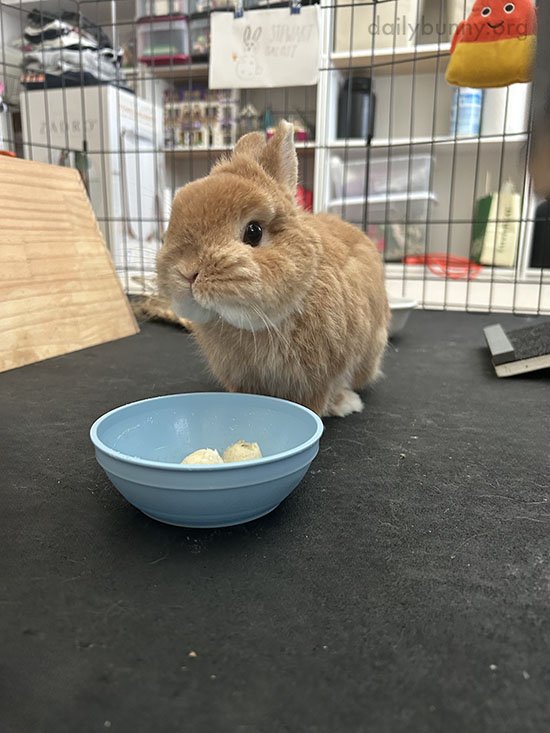
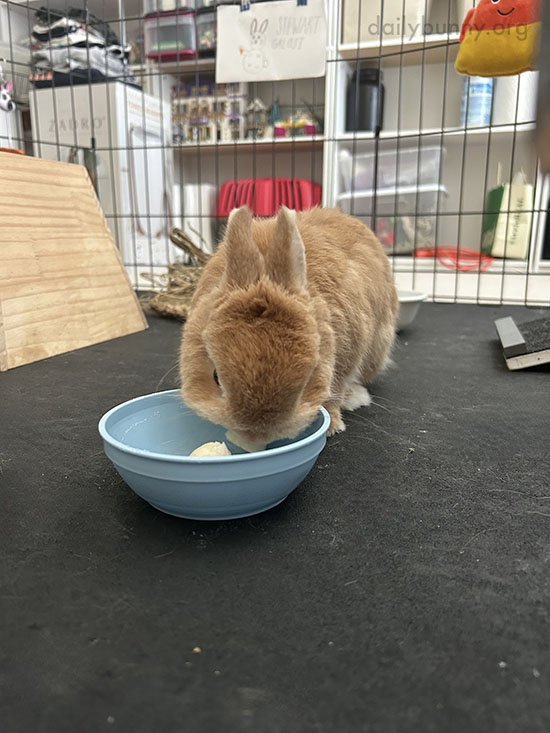
Thanks, Camryn and bunny Stewart! Camryn writes, “This is Stewart and he loves bananas!”
(I mean, even his name is soo cute!)

































